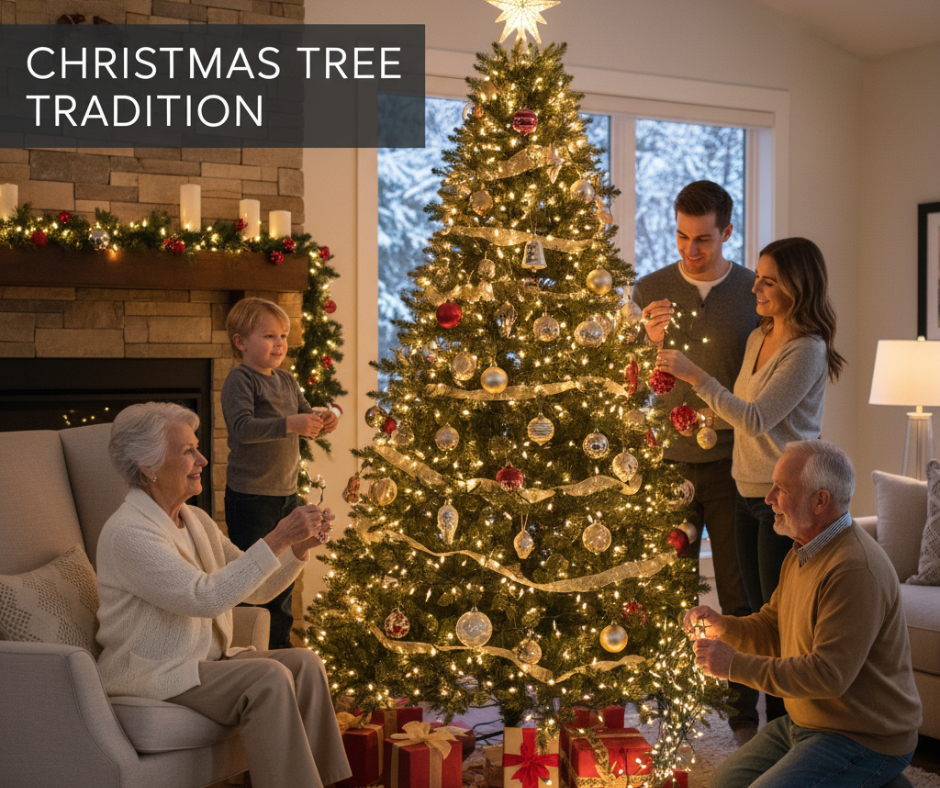The Christmas tree, a sparkling evergreen adorned with lights and ornaments, has become one of the most beloved and iconic symbols of the holiday season worldwide. Yet, beyond its festive beauty, the Christmas tree tradition carries deep historical roots, cultural evolution, and symbolic meanings. How did this evergreen become synonymous with Christmas celebrations? How has the tradition evolved over centuries, and why does it endure so powerfully today? This article explores the rich history and the enduring significance of the Christmas tree tradition.
Ancient Roots: Evergreen Trees as Symbols of Eternal Life
The Christmas tree tradition finds its foundations far before the advent of Christianity. Ancient civilizations including the Egyptians, Hebrews, Chinese, and Romans used evergreen plants like fir, pine, and holly during their winter solstice celebrations. Evergreens were prized because they remained vibrant and green through the darkest, coldest months, symbolizing eternal life, resilience, hope, and renewal.
For example, the Romans celebrated Saturnalia in December, decorating homes with evergreen boughs during the festival. Pagan cultures revered evergreens as sacred, linking them to fertility and protection against evil spirits during winter’s harshness. These ancient practices set the stage for the integration of evergreens into Christian rituals.
The Birth of the Christmas Tree Tradition in Germany
The Christmas tree tradition as we recognize it today originated in 16th-century Germany among Protestant Christians. The story most commonly associated with its origin involves Martin Luther, the Protestant reformer. Legend has it that Luther was inspired by the beauty of stars shining through pine trees during a winter walk. He brought a tree into his home and decorated it with candles to replicate that magical sight indoors.
Initially, Germans decorated trees with fruits like apples and nuts, paper flowers, and wafers symbolizing the Eucharist. By the 18th century, it became a widespread practice across German households, especially among the middle and upper classes. The triangular shape of the fir tree was seen to represent the Holy Trinity (Father, Son, Holy Spirit) and became a powerful Christian symbol replacing earlier pagan customs.
The Spread of the Tradition Across Europe and Beyond
The tradition gradually traveled beyond Germany’s borders:
-
In the 19th century, Queen Victoria and her German-born husband Prince Albert popularized the Christmas tree in Britain. Their illustrated family tree celebrations were featured in widely read magazines, inspiring adoration and imitation.
-
German immigrants carried the custom to North America throughout the 1700s and 1800s. The Christmas tree quickly gained popularity among American families.
-
Other European countries like Austria, Switzerland, Poland, and the Netherlands embraced the tradition, each adding local decorative styles.
-
By the 20th century, Christmas trees became an international phenomenon, symbolizing joy and festivity even in places without Christian majorities thanks to cultural globalization and commercialization.
The Symbolism Behind Christmas Tree Decorations
Every part of the Christmas tree and its decorations holds symbolic meaning:
-
The evergreen tree itself represents eternal life offered through Jesus Christ.
-
Lights and candles symbolize Christ as the Light of the World, bringing hope to the darkness.
-
The star or angel placed at the top recalls the Star of Bethlehem or the angel announcing Jesus’ birth.
-
Ornaments like apples harken back to the paradise tree, symbolizing the Garden of Eden and original sin.
-
Tinsel and garlands mimic the beauty and shimmer of heavenly light.
-
Edible decorations such as gingerbread and candy canes carry joyful, festive connotations.
-
The circle of the wreaths and garlands represents eternity and unending love.
These symbols meld religious faith, folklore, and seasonal celebration, reinforcing the tree’s importance in cultural consciousness.
Modern Traditions and Customs
Today, the Christmas tree tradition includes many cherished practices:
-
Tree lighting ceremonies in public squares mark the start of holiday festivities in cities worldwide.
-
The Rockefeller Center Christmas tree lighting in New York is an emblematic annual event watched by millions.
-
Families enjoy decorating their trees together, making it a treasured bonding ritual.
-
Trees can be natural or artificial, and decorating styles range from classic red and green to modern themes.
-
The tradition of placing gifts under the tree epitomizes generosity and anticipation.
Despite its evolution and commercialization, the Christmas tree remains a heartfelt tradition embodying joy, hope, and community during the winter season.
The Cultural and Religious Significance Today
The Christmas tree serves as both a religious symbol and a secular emblem of the holiday spirit. For many Christians, it reflects the eternal life offered by Christ and the light he brings. For others, especially in multicultural and secular societies, it has become a symbol of warmth, family, and celebration transcending religious boundaries.
Its setting in homes, churches, and public spaces fosters togetherness and light amid the darkest days of winter. The blend of ancient evergreen symbolism and Christian tradition gives the Christmas tree a uniquely layered importance.
Read More: What is the First Thing You Put on a Christmas Tree? A Complete Guide to Decorating Order
Conclusion
The Christmas tree tradition is a beautiful fusion of ancient pagan customs, Christian symbolism, and evolving cultural festivities. From its early use as a symbol of eternal life by ancient civilizations to the illuminated trees of 16th-century Germany, it has grown into a universal holiday icon.
Whether natural or artificial, traditional or modern, the Christmas tree carries a message of hope, joy, and renewal that resonates warmly around the world every year. As we decorate our trees and celebrate, we partake in a centuries-old tradition that continues to unite people in the spirit of the season.



Add a Comment